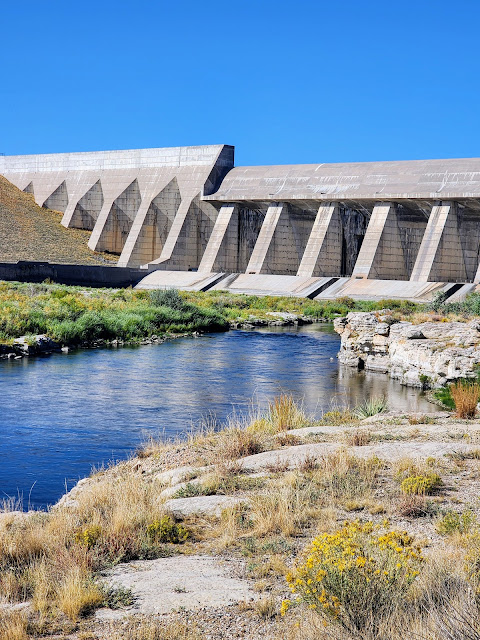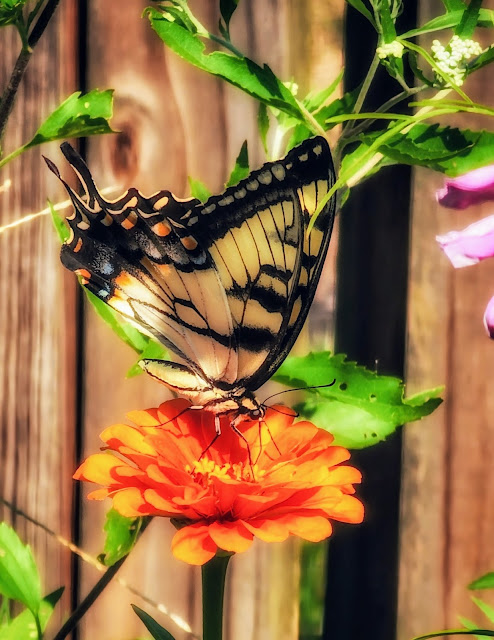"Conservation can be defined as the wise use of our natural environments; it is, in the final analysis, the highest form of national thrift- the prevention of waste and despoilment while preserving, improving, and renewing the quality and usefulness of all our resources." ~ John F. Kennedy, U.S. President January 20,1961- November 22,1963
Anticline Pond
Lake Pueblo State Park
Lake Pueblo State Park
Colorado, USA
Conservation begins with a proper understanding of our natural resources. To gain a proper understanding of what is required to conserve natural resources, we can begin by developing key concepts of classification by answering the following four questions:
1. What are natural resources?A natural resource can be defined as a material of nature to which people have assigned value such as timber, fresh water, wildlife, and fossil fuels coal and oil.
2. What is a renewable natural resource?
Renewable natural resources can be replenished naturally or with human effort, such as agricultural crops or hunted wildlife.
3. What are nonrenewable natural resources?
Nonrenewable resources are non-living natural resources which, for all practical purposes, cannot be replaced; including metallic minerals such as gold and copper and the fossil fuels coal and oil.
4. What is conservation?
Conservation is the care, wise use, and management of a natural resource.
Colorado, USA
Natural resources are the raw materials we use for:
- housing
- heating
- cooking
- clothing
- transportation
- energy
- soil
- water
- trees
- air
- minerals
- fossil fuels
- fish and wildlife
Lake Pueblo State Park, Colorado, USA
Everything in the universe is connected and every action or inaction directly impacts that of another. When we understand our natural resources, the urgent need for environmental stewardship and effective conservation practices becomes clear. We must wisely use what we have and find solutions for the negative human impact caused by a constant demand for more.
Ultimately, environmental degradation will affect us all with the tragic results of further:
- habitat loss
- deforestation
- wetland drainage
- soil erosion
- air and water pollution
- dwindling energy and mineral supplies
- extinction of species
"Think globally, act locally." ~Rene Dubos
"Humankind has not woven the web of life. We are but one thread within it. Whatever we do to the web, we do to ourselves. All things are bound together... all things connect." ~ Chief Seattle
- shop with reusable bags and reuse any plastic or paper bags you already have
- turn off water sources when you are not actively using them
- take showers instead of baths
- use hot water sparingly
- wash only full loads of dishes and clothes
- air dry when possible
- turn off lights when not in use
- use energy efficient LED light bulbs
- turn down the thermostat when leaving home
- unplug appliances when not in use or use power strips
- use natural lighting as often as possible
- purchase energy efficient appliances
- properly dispose of hazardous waste items
- properly insulate your home with weather stripping and caulk
James W. Broderick Hydropower Plant at Pueblo Dam in Lake Pueblo State Park
"Humankind has not woven the web of life. We are but one thread within it. Whatever we do to the web, we do to ourselves. All things are bound together... all things connect." ~ Chief Seattle
Here are some ideas especially for teachers and students:
- volunteer and get involved in community efforts
- work with local conservation organizations
- write letters regarding environmental issues to the editor in your local or school paper
- create a school blog dedicated to environmental issues, advocacy, and awareness
- put up an environmental information center or bulletin board at school
- start a book and game swap at school
On your home property and in your neighborhood you can help conserve and protect natural resources by doing the following:
- plant native trees, shrubs, and flowers
- plant a butterfly garden to attract various species
- use sustainable gardening practices
- drip irrigation or soaker hoses
- mulch beds to retain soil moisture
- set up a rain barrel to collect water for watering plants
- reduce lawn size with drought tolerant shrubs and perennials
- add areas for wildlife habitat
- water early morning or evening to minimize evaporation
Eastern Tiger Swallowtail
(Papilio glaucus)
Working together as environmental stewards within our local communities helps us to lessen our personal impact on worldwide natural resources. Every intentional caring action that we take will increase conservation efforts for present and future generations of humans and wildlife to thrive in the natural world.
HAPPY EARTH DAY!
Exploring the World Day-by-Day; Capturing Nature's Wondrous Display! ~ Jen
Despite the differences that exist between political, cultural, religious, or national values, we all share the common need for a healthy, clean, sustainable global environment.





